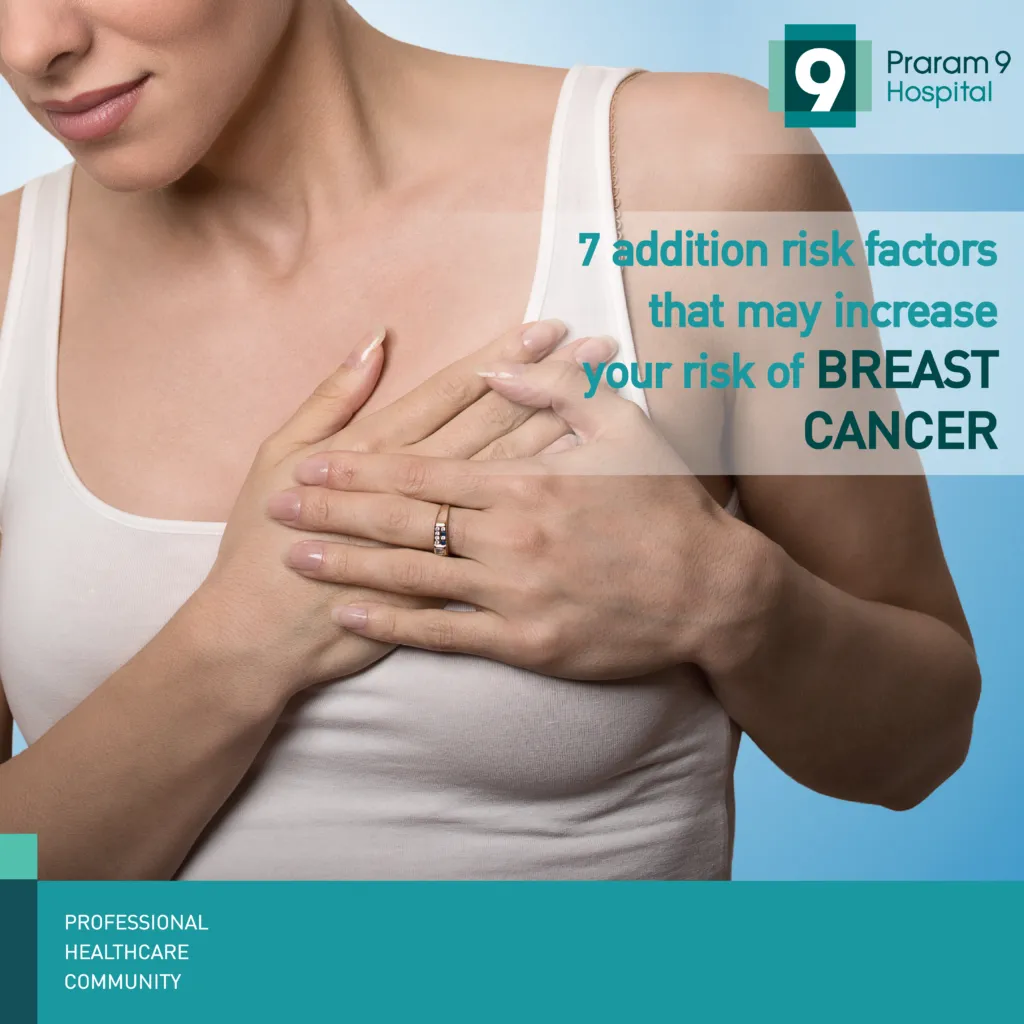Health Articles
Knowledge
7 additional risk factors that may increase your risk of breast cancer in women

7 additional risk factors that may increase your risk of breast cancer in women
What is breast cancer?
Breast cancer is a type of cancer found in the breast, can occur in both women and men. It can start of as a lump on the chest and develop into a serious cancer overtime. Symptoms of breast cancer includes changes to the skin around your breast area such as dimpling, redness or scaling, changes to your nipple, a thickening or a lump from your breast. We will discuss the factors that may increase your risk of getting breast cancer that you should be aware of.
Here are 7 risk factors that may increase your risk of breast cancer:
· Consuming more alcohol can increase your risk of developing breast cancer. The more alcohol you consume, the higher the risk as alcohol has the properties to limit our liver’s ability to balance estrogen level in our blood which can risk.
· Having high level of stress or anxiety for prolong period of time may increase your risk of getting breast cancer. Although it is still unclear if how much impact stress and anxiety can impact your chances, maintaining a low level of stress and anxiety can definitely improve your life as well as some studies suggesting that having healthy amount of stress and boost your immune system too.
· Although men can develop breast cancer, the hormone estrogen and progesterone which women have higher level of than men control the development of breast cells and therefore by default put women at a much higher risk of breast cancer compare to men.
· African-American women have higher risk of breast cancer compare to Asian, Hispanic and native American women.
· You will have high chance of getting breast cancer if you have had breast cancer before.
· Women who do not have children and do not breastfeed have higher chance of breast cancer as pregnancy and breastfeeding lower the total amount of menstrual cycles in women’s lifetime which can help to reduce the overall risk.
· If you had radiation therapy performed on you before as treatment for another cancer, this can significantly put you at a higher risk of breast cancer. Furthermore, if the breast were still developing during the patients teen years, the risk will be increased greatly.














